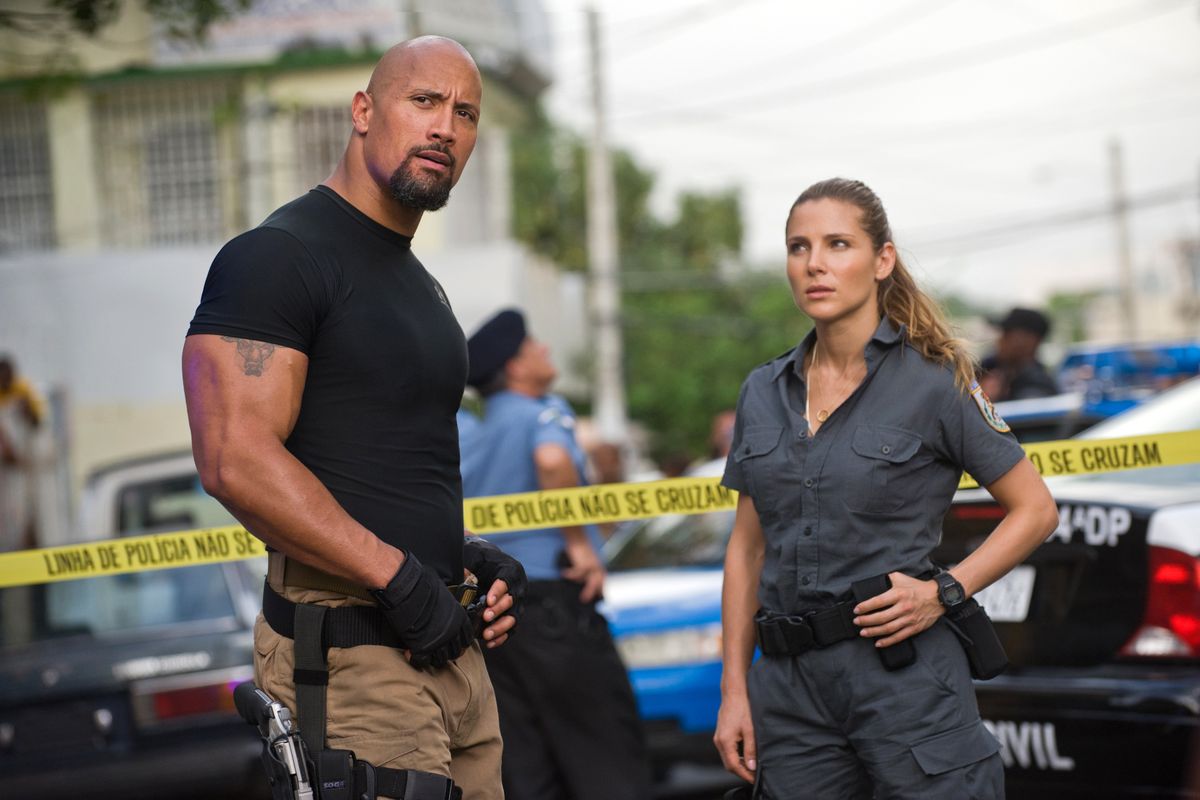Big-screen muscles a growth industry
As economy falters, celluloid heroes pack on the pounds

A barbarian has needs – a sword, a shield, and roughly 56 chicken breasts a week.
That’s what Jason Momoa ate while filming “Conan the Barbarian” (due Aug. 19), this summer’s big-screen reboot of the series that launched Arnold Schwarzenegger’s action movie career in 1982.
Over a few months in 2010, Momoa, a 6-foot-4-inch Hawaiian actor and model, added about 30 pounds of muscle to his 205-pound frame to play two high-profile, bare-chested plunderers: Conan and Khal Drogo, the 7-foot-tall warrior-king marauding on HBO’s “Game of Thrones.”
He isn’t the only actor whose T-shirts have gotten a lot tighter recently. Dwayne Johnson packed 30 pounds onto his already brawny 6-foot-4-inch frame to grapple as a lawman opposite meaty Vin Diesel in “Fast Five.”
Chris Hemsworth gained so much bulk to wield “Thor’s” giant, magic hammer convincingly that his costume didn’t fit. And Chris Evans added plenty of patriotic sinew for “Captain America: The First Avenger.”
These massive men of summer are a shift from seasons past, when slight actors such as Tobey Maguire and Orlando Bloom populated the franchise movies and walking mountains like Johnson were encouraged to winnow their physiques to get parts.
Some of this muscling up of summer’s heroes is driven by comic-book aesthetics and some, academics say, by cyclical notions of masculinity: In times when men are losing financial or societal power, biceps the circumference of tree trunks are proof of virility.
In addition to grueling workouts and meticulous nutrition, a number of celluloid hunks benefit from digital embellishments that make them appear even larger in marketing materials like posters and billboards. Many moviegoers may also wonder whether actors use steroids to build their bodies.
The actors interviewed for this story said they did not use illegal substances to pump themselves up. Yet some experts say the extreme images on screen, however achieved, may tempt men both in and outside of show business to consider using illicit products to keep up.
Steroid use “still occurs in Hollywood,” said Logan Hood, a former Navy SEAL who whipped the Spartan army into shape for “300” and recently helped Zac Efron add 18 pounds to play a Marine in this fall’s “The Lucky One.”
“I hear about that,” Hood says of steriods. “That is insanity to consider that sort of option.”
In the 1970s and ’80s, Schwarzenegger developed his Conan form through a championship bodybuilding career that he has admitted included the use of then-legal anabolic steroids.
His bulging arms and massive chest replicated the look of heroic characters popularized by illustrator Frank Frazetta’s 1960s pulp paperback covers, which established a dramatic new standard in fantasy art.
“In a perfect world, I’d like to look like a Frank Frazetta painting, without doing steroids,” Momoa said of the artistic inspiration for his pumped physique in “Conan.”
Momoa said he followed a workout routine that included push-ups, pull-ups, squats and burpees (a torturous squat-jump-push-up hybrid) as well as a diet heavy in lean protein, broccoli, yams and peanut butter.
Johnson – a pro wrestler and former major college football player whose size helped him land his first Hollywood roles in movies such as 2002’s “The Scorpion King” – pared a few years ago and dropped his ring name, The Rock, to take on softer films such as “The Tooth Fairy.”
For “Fast Five,” Johnson packed back on the muscle. To reach a filming weight of 280 pounds – or, in action hero math, 1.5 Clint Eastwoods – he ate 6,000 to 8,000 calories a day and followed his regular iron-pumping regimen of “sweat, spit and sometimes training so hard I throw up a little bit in my mouth.”
Johnson said he also took a daily multivitamin and glutamine, a supplement that aids in muscle recovery after workouts.
“I wanted to create a character that audiences immediately identified as a physically dominant, intense beast of a man who at any time could remove his badge and gun and rip Vin’s face off with his bare hands,” he said of building his chest to 54 inches and his biceps to 23 inches.
“No visual effects or green screen- manufactured physicality – a real man.”
Just what it means to be a real man in the world today is changing – and that’s part of what’s making muscles a growth industry in Hollywood, according to Emily Fox-Kales, author of “Body Shots: Hollywood and the Culture of Eating Disorders” and clinical instructor in psychiatry at Harvard University.
“As men have lost more economic power, more social power, they’ve wanted to look more pumped-up,” Fox-Kales said, pointing to the recent recession that disproportionately hit male-dominated jobs like construction and manufacturing.
“Muscles have become an accessory, like pickup trucks.”